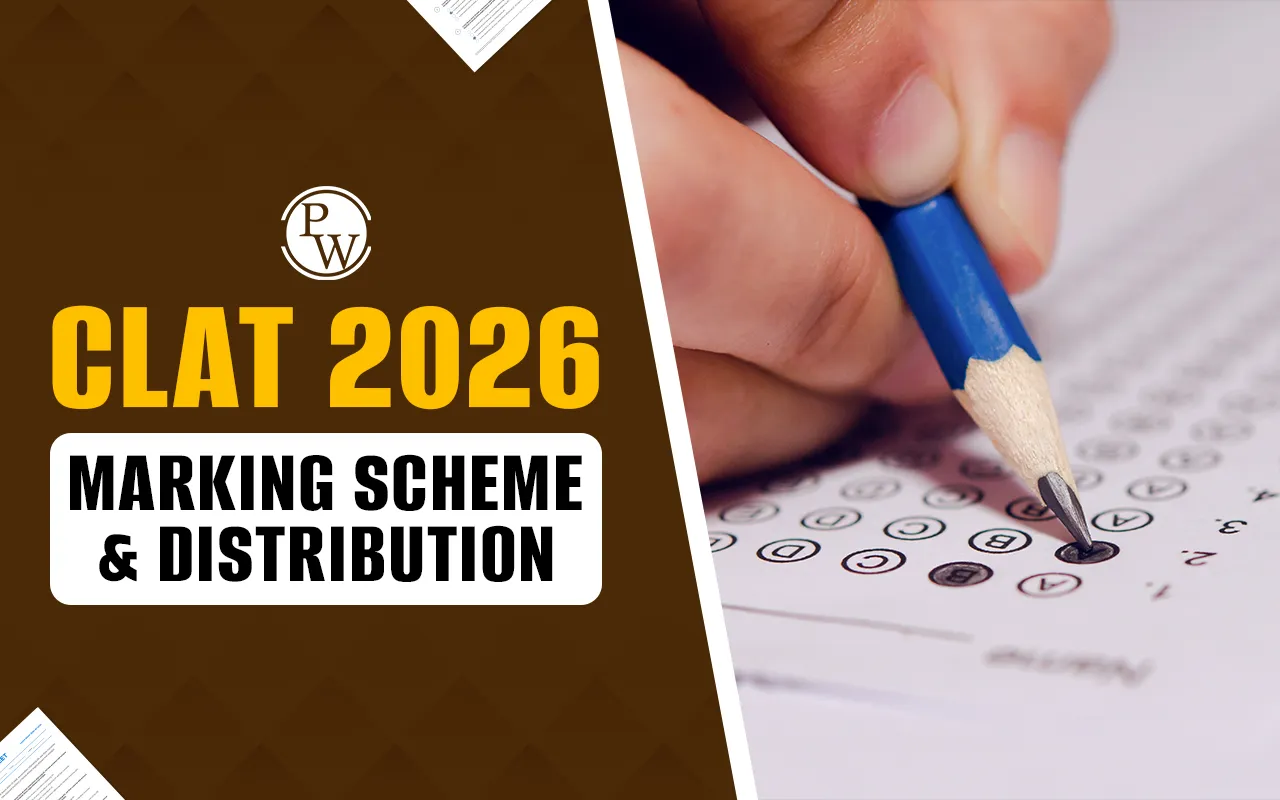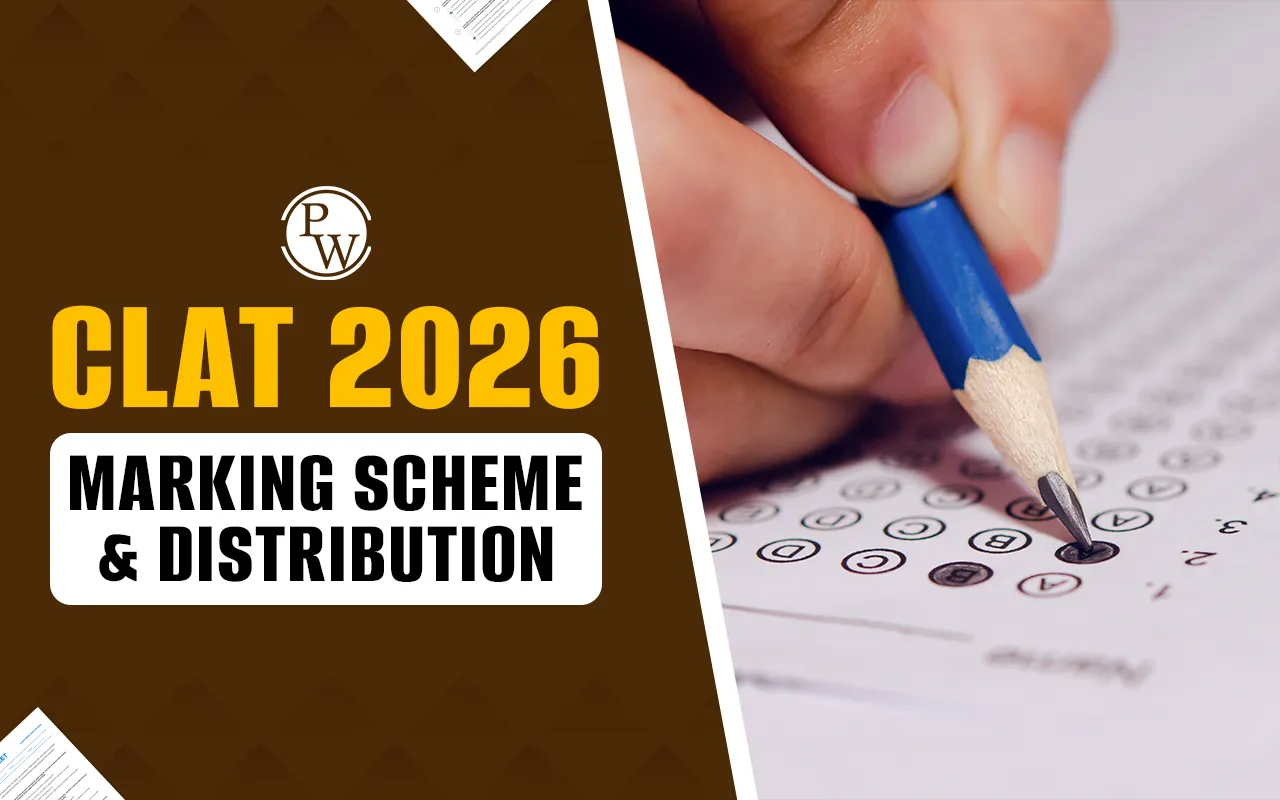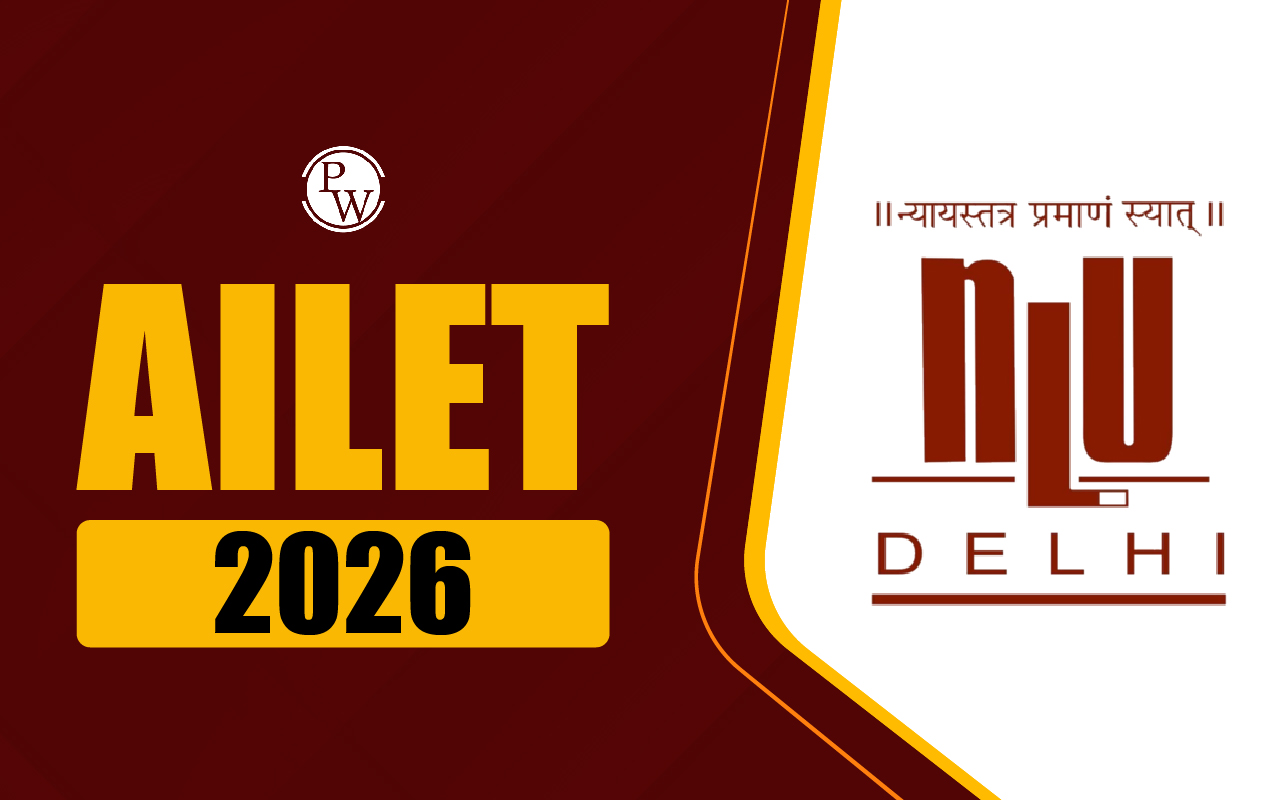

CLAT 2026 Marking Scheme & Distribution: The CLAT 2026 exam consists of 120 multiple-choice questions spread across five sections, namely, English Language, Current Affairs including General Knowledge, Legal Reasoning, Logical Reasoning, and Quantitative Techniques. Each correct answer awards 1 mark, while each incorrect response results in a deduction of 0.25 marks. No marks are deducted for unanswered questions.
Understanding this marking scheme is crucial as it allows candidates to strategically approach the exam, focusing on sections with higher weightage and minimizing potential score deductions through careful question selection.
Checkout Law Books from PW Store
CLAT 2026 Exam Pattern Highlights
The CLAT 2026 exam is a comprehensive multiple-choice question paper designed to assess candidates' skills across five key sections. The exam will be conducted offline in pen-and-paper mode, consisting of 120 multiple-choice questions, with candidates given two hours to complete the test . Each question carries 1 mark, with a total exam score of 120 marks, and includes a negative marking of 0.25 marks for incorrect answers . The exam covers five critical sections: English Language, General Knowledge and Current Affairs, Legal Reasoning, Logical Reasoning, and Quantitative Techniques . The primary objective is to evaluate candidates' comprehension and reasoning skills, making rote learning ineffective for success.
| CLAT 2026 Exam Pattern Highlights | |
|---|---|
| Particulars | CLAT Exam Pattern Highlights |
| Exam mode | Pen-and-paper exam |
| Exam duration | Two hours |
| Test language | English |
| Type of questions | Multiple-Choice Questions (MCQs) |
| Exam subjects | Five (English Language, Current Affairs including General Knowledge, Legal Reasoning, Logical Reasoning, Quantitative Techniques) |
| Total questions | 120 MCQs |
| Maximum marks | 120 marks |
CLAT 2026 Making Scheme
The CLAT 2026 marking scheme is a key component for candidates to understand how their performance will be evaluated. It details how points are assigned for correct answers, how negative marking for incorrect answers works, and the distribution of marks across different sections. The exam has a total of 120 marks, with multiple-choice questions (MCQs) worth 1 mark each, and a negative marking penalty of 0.25 marks for every incorrect answer .| CLAT 2026 Making Scheme | |
| Particulars | Details |
| Correct Answer | +1 mark for each correct answer |
| Incorrect Answer | -0.25 marks for each incorrect answer |
| Unattempted Questions | No marks deducted or awarded |
CLAT 2026 Sectional Weightage & Marks Distribution
The CLAT 2026 sectional weightage refers to the distribution of marks across different sections of the exam, such as English Language, Current Affairs, Legal Reasoning, Logical Reasoning, and Quantitative Techniques. Understanding the sectional weightage is important for candidates to prioritize their preparation and focus on the sections that carry more marks. The exam is specifically designed to test candidates' comprehension and reasoning skills, making rote learning ineffective.| CLAT 2026 Sectional Weightage & Marks Distribution | |||
| Section | No. of Questions | CLAT section-wise Marks | Approximate Weightage |
| English Language | 22-26 | 22-26 | 20% |
| Current Affairs, including General Knowledge | 28-32 | 28-32 | 25% |
| Legal Reasoning | 28-32 | 28-32 | 25% |
| Logical Reasoning | 22-26 | 22-26 | 20% |
| Quantitative Techniques | 10-14 | 10-14 | 10% |
| Total | 120 | 120 | 100% |
CLAT 2026 Exam Pattern Key Features
The CLAT 2026 exam pattern is a comprehensive assessment designed to evaluate candidates' multifaceted skills through a structured multiple-choice question paper. The exam will be conducted offline (pen-and-paper based) with a total duration of two hours . Some key features are as follows.- The CLAT 2026 exam will be held offline (pen-paper based) with a total duration of two hours for candidates to complete the question paper .
- The exam will consist of 120 multiple-choice questions totaling 120 marks, including sections English Language, Current Affairs including General Knowledge, Logical Reasoning, Legal Reasoning, and Quantitative Techniques.
- Most sections will include passage-based questions.
- English, Current Affairs, and Logical Reasoning sections will have 450-word passages.
- Quantitative Techniques will include short sets of facts, graphs, and pictorial representations.
- Each passage will be followed by a series of questions.
- The exam will test candidates' comprehension and reasoning skills .
CLAT 2026 Exam Pattern Subject-Wise Details
The number of questions and the marking scheme for each section in CLAT 2026 will vary, so understanding the subject-wise details helps candidates strategize their preparation and manage time efficiently during the exam. By knowing the specific weightage of each subject, candidates can focus on areas that align with their strengths and the exam requirements.- English Language Section: The English section comprises 22-26 questions, carrying 20% weightage in the exam. It includes passages of around 450 words derived from historically significant non-fiction and fiction writing, with a difficulty level equivalent to Class 12. Students often find this section easy but tricky.
- Current Affairs & General Knowledge: This section contains 28-32 questions with 25% weightage. It features passage-based questions covering static general knowledge, national and international news, and related topics. Many past candidates consider this the easiest section of the CLAT exam.
- Legal Reasoning: The Legal Reasoning section includes 28-32 questions with 450-word passages focusing on public policy-making, legal matters, and moral philosophical inquiries. Based on previous years' analysis, this section was relatively easy with short passages.
- Logical Reasoning: This section has 22-26 questions carrying 20% weightage. It includes 450-word passages followed by multiple-choice questions, with questions ranging from easy to moderate difficulty levels.
- Quantitative Techniques: The mathematics section carries the minimum weight in the CLAT exam, with 10-14 questions. Questions are based on elementary mathematics from Class 10, covering topics like ratio and proportions, basic algebra, mensuration, and statistical estimation.
CLAT 2026 Preparation Tips
Here are some preparation tips for CLAT 2026.
- Familiarize yourself with the CLAT 2026 exam pattern, the subjects, and the types of questions asked. Make sure you understand the detailed syllabus to focus on key areas.
- Pay special attention to sections like Legal Reasoning, English Language, and Logical Reasoning, as they play a significant role in your overall score. Practice reading comprehension, legal principles, and logical puzzles to improve your speed and accuracy.
- Instead of just solving numerous questions, concentrate on understanding the principles behind legal concepts.
- Practice questions on logical reasoning questions through real-world scenarios and case studies.
- Focus on basic mathematical concepts like percentages, ratios, and averages. Regular practice with data interpretation and word problems will build your confidence and speed.
- Take regular mock tests to simulate the exam environment, improve time management, and analyze your performance.
- Develop a balanced study plan that allocates time for all subjects while incorporating regular revision sessions to reinforce learning.
- Read newspapers, magazines, and online sources regularly to stay informed about current events, which will help you in the General Knowledge and Current Affairs section.
CLAT 2026 Marking Scheme & Distribution FAQs
What is the marking scheme for CLAT 2026?
The CLAT 2026 marking scheme involves awarding 1 mark for each correct answer and deducting 0.25 marks for every incorrect response, with a total of 120 multiple-choice questions carrying 120 marks.
How is the marking distributed among sections?
The CLAT 2026 exam distributes marks across five sections, with Current Affairs including General Knowledge and Legal Reasoning holding the maximum weightage at 25% each, while English Language and Logical Reasoning carry 20% each, and Quantitative Techniques has the lowest weightage at 10%.
How many questions will be asked in CLAT 2026?
The CLAT 2026 exam will have 120 multiple-choice questions (MCQs). This is a change from previous years, as the exam pattern was modified in 2023 to reduce the total number of questions from 150 to 120 while maintaining the same time duration.
When will CLAT 2026 be held?
The Consortium of NLUs will notify the exact exam date on its official website, with the exam likely to be conducted in the first week of December 2025.
How can I prepare for CLAT 2026?
Start by understanding the exam pattern and syllabus, create a study plan, practice with mock tests, and stay updated on current affairs. Focus on building speed, accuracy, and conceptual clarity.
Talk to a counsellorHave doubts? Our support team will be happy to assist you!

Check out these Related Articles
Free Learning Resources
PW Books
Notes (Class 10-12)
PW Study Materials
Notes (Class 6-9)
Ncert Solutions
Govt Exams
Class 6th to 12th Online Courses
Govt Job Exams Courses
UPSC Coaching
Defence Exam Coaching
Gate Exam Coaching
Other Exams
Know about Physics Wallah
Physics Wallah is an Indian edtech platform that provides accessible & comprehensive learning experiences to students from Class 6th to postgraduate level. We also provide extensive NCERT solutions, sample paper, NEET, JEE Mains, BITSAT previous year papers & more such resources to students. Physics Wallah also caters to over 3.5 million registered students and over 78 lakh+ Youtube subscribers with 4.8 rating on its app.
We Stand Out because
We provide students with intensive courses with India’s qualified & experienced faculties & mentors. PW strives to make the learning experience comprehensive and accessible for students of all sections of society. We believe in empowering every single student who couldn't dream of a good career in engineering and medical field earlier.
Our Key Focus Areas
Physics Wallah's main focus is to make the learning experience as economical as possible for all students. With our affordable courses like Lakshya, Udaan and Arjuna and many others, we have been able to provide a platform for lakhs of aspirants. From providing Chemistry, Maths, Physics formula to giving e-books of eminent authors like RD Sharma, RS Aggarwal and Lakhmir Singh, PW focuses on every single student's need for preparation.
What Makes Us Different
Physics Wallah strives to develop a comprehensive pedagogical structure for students, where they get a state-of-the-art learning experience with study material and resources. Apart from catering students preparing for JEE Mains and NEET, PW also provides study material for each state board like Uttar Pradesh, Bihar, and others
Copyright © 2025 Physicswallah Limited All rights reserved.










